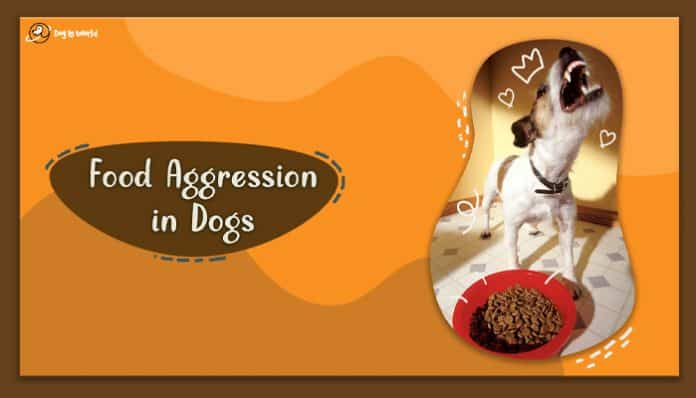Does your paw-friend display aggressive behavior during meal times? Are you worried about what is causing such behavior? If yes, then you are dealing with a condition called food aggression in dogs.
This is definitely a serious matter that needs immediate attention otherwise the risk of this aggression displayed by your puppy being extended to other things than food are high.
Don’t worry, you have landed on the right page, and I am here to help you tackle this issue. Sudden food aggression in dogs is bound to worry dog parents, but I want you to know that it is definitely treatable. The key is to learn about the issue before proceeding to tackle it.
And of course, there is no denying that providing your dog-baby with adequate dog nutrition will always stay a priority! So, anything related to your dog’s diet definitely needs immediate attention and action.
So let us start with looking at what exactly is food aggression in dogs and how you can recognize if your dog-child is showing symptoms of food aggression.
Table of Contents
What is Food Aggression in Dogs?

Food aggression in dogs can be recognized as a defensive behavior where they show aggressive behavior while approached by other dogs or humans during their meal times. It is understood to be a form of resource guarding, where they feel the need to be defensive and protect their food at all cost.
Dog food aggression can be seen on three different levels, which are;
- Mild food aggression – if your dog is showcasing aggression in the form of low growls and baring its teeth while you or other dogs are around it.
- Moderate food aggression- when your food aggressive doggo snaps or lunges towards you or anyone who approaches their food or them during meal times.
- Severe food aggression- this is when your paw-friend attacks and bites whoever approaches their food, even though they are familiar with the person.
This can be a worrisome situation to face with your dog, and it is essential that you approach them with a lot of care and expertise.
But is this a natural phenomenon in your pup? Or has something suddenly caused it? Let us dive into the causes of food aggression in dogs.
What Causes Food Aggression in Dogs?
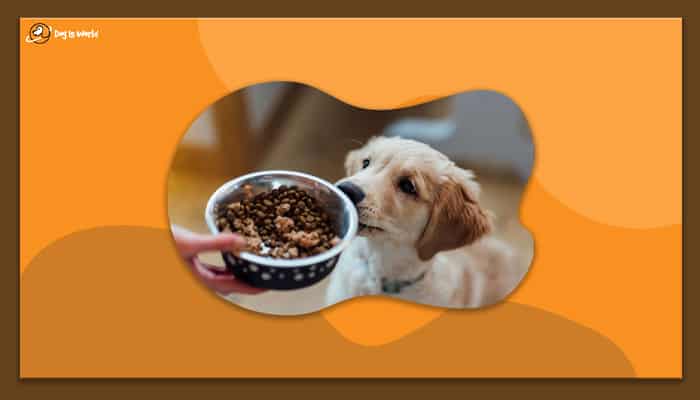
While you look at what causes food aggression in dogs, it is imperative that you keep a close lookout for any behavioral changes in your pup. Keep a track of any new behavioral changes that your dog may have picked up, even the ones that are not around food and eating. Now, let us look at some of the causes of aggression in your dog.
- Hormones! Yes, it could depend a lot on your puppy’s age because hormonal changes in your dog can be a cause for them to start showcasing food aggression.
- Food aggression in puppies can also be something they picked up in puppyhood, even unintentionally through puppy training or some other activities.
- Genetics, hello! As much as we see our puppies as our own kind, and sometimes they also display behavior that are human-like, they are still part of the canine family! And sometimes resource guarding is an inherent behavior in them. A lot of breeds, including some service dogs, like German Shepherds, Golden Retrievers, Rottweilers, Springer Spaniels, etc. naturally have hereditary guarding instincts. This is because it is part of who they are as dogs. Although these guarding instincts are not usually showcased on food, it is usually on properties, people and livestock that are under their charge.
- Trauma can be one of the most important causes to be aware of in dogs. Dogs who have gone through any kind of trauma in their puppyhood or even in their later life can turn out to be food aggressive dogs.
These are just a few common causes, but there may be more that is unique to your pup, so keep an eye out if they showcase any peculiar behavior.
Apart from these causes, it is also important to understand if your dog is naturally of an aggressive and dominant kind, or naturally a soft, timid kind.
Naturally dominant dogs tend to follow the ‘alpha pack’, where they either think they are part of a pack, or they think they are the leader of the pack or the alpha themselves. These kinds of dogs think it is their duty to guard their resources, at any cost.
In the case of naturally timid dogs, they become aggressive because they think they are not in a safe environment around the food or people. This could also be a trauma response among shelter or rescue dogs.
These poor paw-friends need to be reassured that the environment they are in and the food are all safe. Won’t we do everything to make them feel safe?
Prevention is Better than Cure
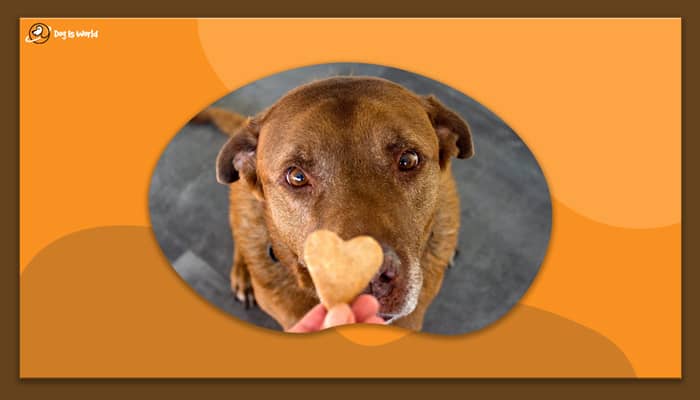
While we are discussing how to stop aggression in dogs in this article, I also want to stress on how important it is to prevent this from happening before scratching your brain out with worry!
Being preventive also helps you from the hassle of training food aggressive dogs and teaching them a new pattern, while your dogs also go through the same stress of change in your behavior and in the environment.
Let me explain some preventive tips that you can use so that you and your dog need not reach this situation;
- Your doggy is a lazy one? Then it is best to make them exercise or play games before their meals. This will also make them accustomed to having to work for their meals. Working for their meals has proved to reduce food aggression in dogs!
- Introducing hand-feeding from an early stage will make the dog trust you with their food and reduce the risk of food aggression as they grow up.
- If your dog is found guarding their food but not eating, you may have to start looking for certain symptoms to check if they are slowly developing food aggression. All or some of these signs may be showcased. These signs are;
- Their ears being held back
- The whites of the dog’s eye being visible
- Their hackles rising
- And their tail being lowered, without movement
All these preventive measures can also be part of their dog obedience training! Now that we are aware of the issue let us look into the ways we can tackle it. Training food aggressive dogs should be approached with utmost care and diligence. Let us take baby steps and understand the training process first.
So, how to fix food aggression in dogs? I have curated a list of steps that you can try out with your pup.
How Can You Approach this Issue?
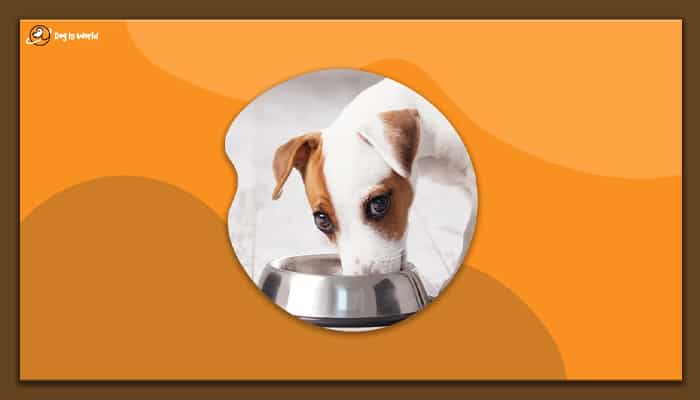
How to get rid of food aggression in dogs? This is a dilemma a lot of dog parents are struggling with. Worry not, because we have a structured, step by step guide to how to approach this issue.
I would highly recommend you to trust the process and be confident!
The chances of your dog sensing your emotions are high, so staying calm and confident will only help in making the process smoother for you.
Step 1: Make Your Presence Known
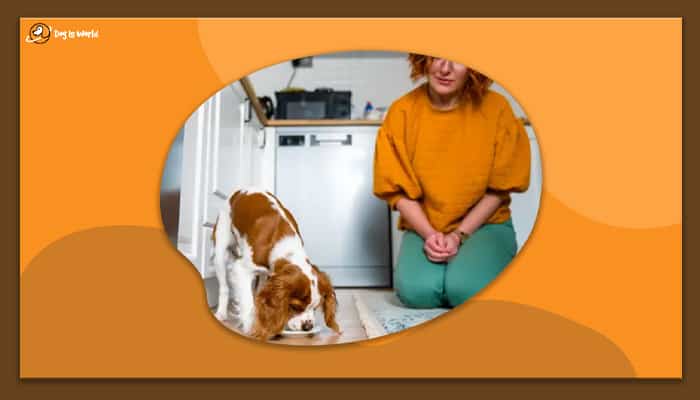
Before introducing any new training, you as the dog parent must make the dog aware and comfortable about their presence. Dogs are naturally territorial, and this makes them reactive or tense when anyone is crossing their territory.
During meal times, stand beside your dog, but keep a bit of distance and make sure they know you are watching them. You can even start communicating with them in a friendly but firm tone. Assess their reaction to your close presence and communication during their meal time.
Step 2: Introduce Treats During Meal Times
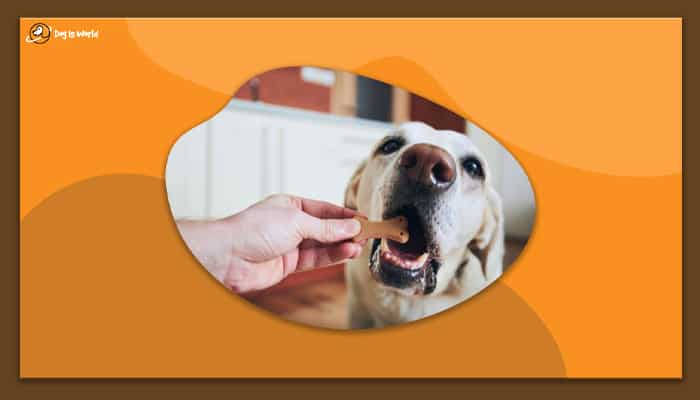
Are you wondering if this could be a wrong practice to follow, and if their treat intake will increase? Worry not friend, because I am here to assure you that this is a completely safe practice. In fact, using treats during training can act as a positive reinforcement and give you faster positive results.
So, how do you treat them? Following the previous step, make sure you are talking to your dog using a loving and firm tone. Doing this, slowly drop a treat into their bowl and immediately move away from them. This will show them that you being around them during meal time is not a threat, and on top, they might also be receiving tasty treats for their calm behavior.
Step 3: Increase Proximity, and Show Dominance
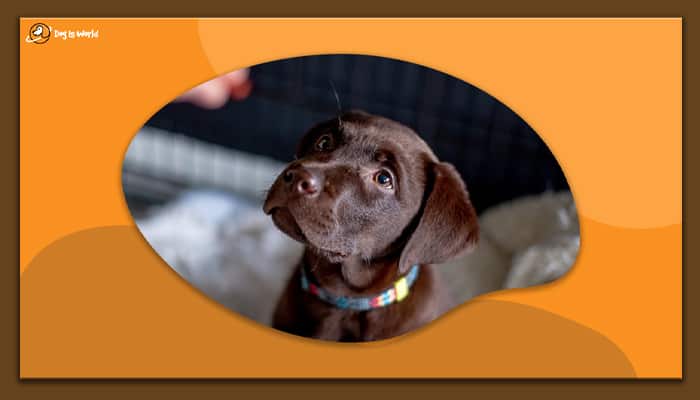
As you practice the previous two steps, if your paw-friend is responding well with them, as a third step, you can increase proximity with the dog and its bowl. See how they react. If your dog is showcasing defensive or dominant traits while you approach them, slowly but gently establish your dominance over them.
Make sure when you establish dominance to show that you are the leader of the pack, you need to be firm, yet gentle. Showing dominance by intimidating them or forcefully moving their food away from them can be the worst thing to do with an aggressive dog with food. You can even use a firm and authoritative tone with them (and mind you, I do not mean a rude tone here, there is a clear difference).
Step 4: Hand Feed Your Dog

This is a step that I would recommend every dog parent practice with their dog children, even if they do not exhibit food aggression behaviors. Hand feeding your dog can also be seen as a preventive method for food aggression in dogs.
Once you are sure that your dog is comfortable with you being closer to them and their food bowl, try hand feeding them. You need not take food from the bowl, you can just choose to feed them treats directly into their mouths. This again, makes them feel safe around you white eating. Make sure you immediately turn and walk away from them, reassuring them that you are not interested in their food.
Step 5: Make Contact With The Bowl

If you have made it till this step, things are going well! Great going, paw-rent! In the next step, we are going to take a step forward and initiate contact with your dog’s precious bowl. Be at ease and feed them a treat, while evidently touching their bowl. While you do this, make sure you keep a calm composure, and do not take any food from their bowl.
This will increase the dog’s comfort and sense of safety around you. Continue this step for the next 8 to 10 meals and observe how your dog reacts. Once you sense your pup being comfortable, move on to the next step.
Step 6: Lift the Bowl During Meal Times
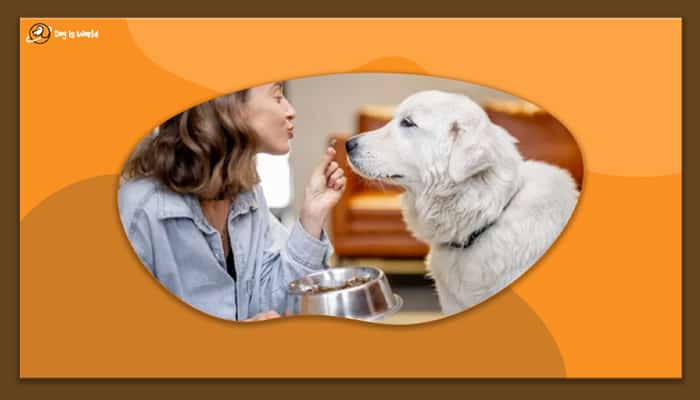
This step is considered extremely important when it comes to trust building between you and your dog. Food aggressive dog training would be incomplete without this step. As we already mentioned above, every aggressive dog with food considered their food bowl the most precious possession. It is time to lift their bowl, while practicing positive reinforcements with their favorite treats. Keep in mind, I would not recommend lifting the bowl more than 12-15 inches.
You can lift the bowl a few inches to put their dog treat in it for the first few meals. After that, try moving around with the bowl lifted, only a few steps here and there, just to assess your dog’s reaction to it. Everytime you see a positive response, do not forget to give treats and shower them with loving words, because they deserve it.
Do not move too swiftly or too slowly. Try to keep a calm composure and move with a steady speed. Your canine friend is smart, they will soon realize that their food is safe and in fact they are getting more treats for being a good dog!
Step 7: Introduce More Family Members (Including Other Pets)

If you have mastered the above few steps, congratulations! It takes a lot of patience and compassion to teach a new routine or train your dog child. Now that your dog is comfortable with you being around their food, it is time to test the same with other family members in the house.
If your dog is a food aggressive dog with other pets in the house, make sure you introduce them around meal times to ease their defensiveness. Follow all the steps mentioned above with care and you will see the aggressive symptoms around food slowly lessen and soon it will have a complete stop.
Step 8: Consider Neutering and Spaying
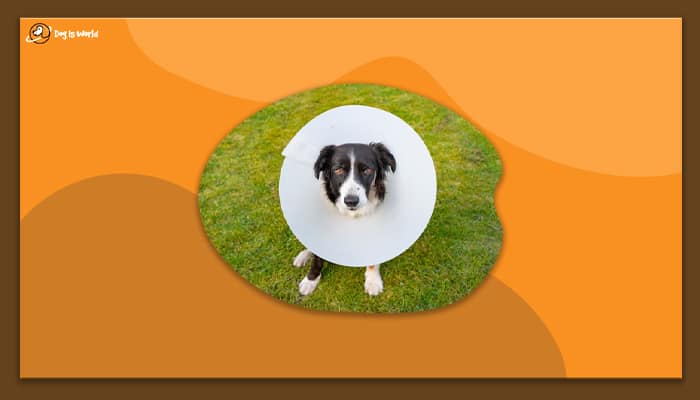
I had mentioned that one of the causes for dog food aggression could be their hormones. This is again applicable to those dogs who are of a particular age and their hormones are going haywire, increasing frustration and aggression in them. With hormonal changes in their body, there could also be the possibility of increased food aggression in dogs.
To tackle this issue, dog parents of such paw-friends should consider neutering and spaying them. Doing these procedures would immensely help the dogs bring down their aggression, and will also ease the paw-parent’s minds.
Things You Should Avoid Doing
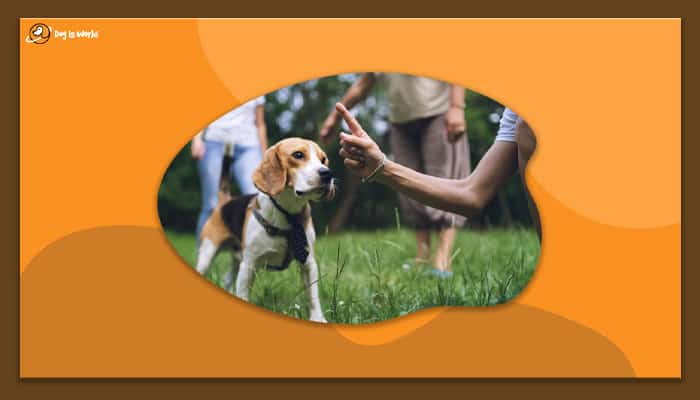
Now that you know your food aggressive dog’s resource guarding tendencies, I must also share some of the things that you must avoid doing!
- It is extremely vital that you keep yourself composed throughout the training. In case you showcase any signs of intimidating behavior or forced domination, this would only make their food aggression worse.
- Another point that you should keep in mind is to never punish or speak rudely to your dog if you do not get positive results training food aggressive dogs. This will again backfire and result in worse symptoms.
An Approach with Love
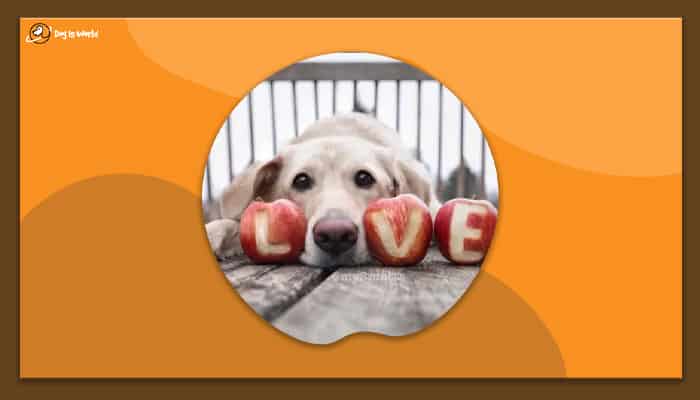
While food aggression in dogs is a serious issue that must be taken care of immediately, you need to consider your dog’s wellbeing at every point of the training. Approach them with all the love, and trust me, this process will be much easier and you will see a great positive result.
Our canine friends are smart beings and they can definitely sense our intention when we are being calm and consistent, so make sure you don’t give up on them. While you are learning to train them, they are learning to listen and follow you!
If you keep three things in mind, that is, to be consistent, assertive and calm, you will be able to ace this training and create a safe space for your favorite paw-friend. After all, you do not want to risk your relationship with the most loyal friend in the world!
Frequently Asked Questions
Are there any levels to the progression of food aggression in dogs? If yes, how many?
Yes, there are three levels of food aggression that can be observed in dogs. They are mild, moderate and severe. If your dog is attempting to bite you during meal times, that indicates severe food aggression. It is best to reach out for a professional’s help in severe cases.
Is this food aggression training only meant for dogs and their owners?
While the food aggression training needs to be practiced initially between dogs and their owners, they can also be introduced to other family members. This also includes other pets in the family!
Is food aggression in dogs curable?
Definitely! If found out at an early stage, with proper training and patience, food aggression in dogs can be cured. You can even take the help of dog professionals or vets for the same.
Author’s Note
Greetings Dog Parents,
I am glad to see you here and I thank you for spending your valuable time reading my blog.
I hope the information provided was helpful for you and your dog-babies. You never need to worry when you have us right here, at the end of a click!
I would love to hear from you. So, feel free to share your thoughts and queries in the comment section below!
See you on the next one,
Toodles Poodles!



